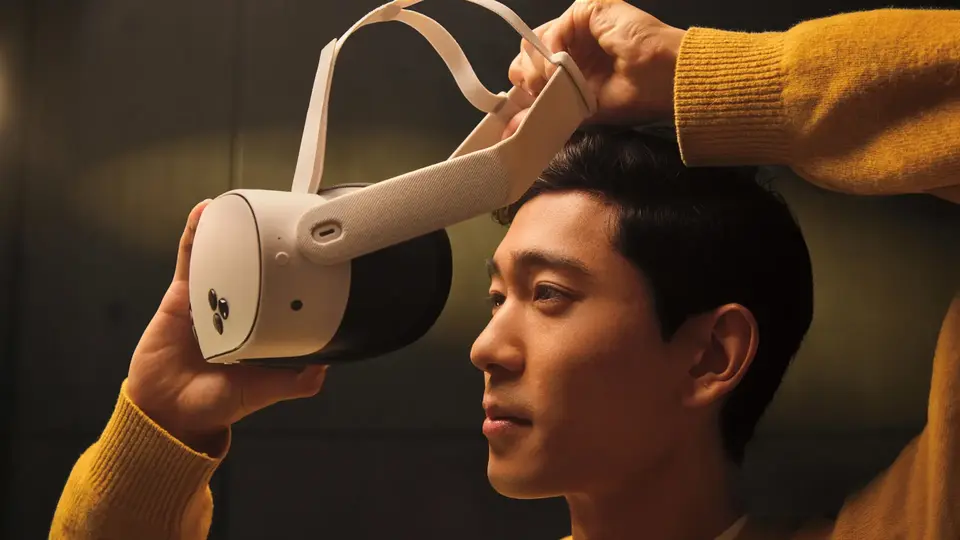Apple Vision Pro vs Meta Quest 3: A Comprehensive Comparison
Posted on June 8, 2023 15 minutes 3096 words
Table of contents
- Apple Vision Pro vs Meta Quest 3: Feature Comparison
- 1. Setting the Stage: The Relevance of VR/MR Today
- 2. Unboxing the Future: Product Details
- 3. The Hardware Showdown: Comparing Specs
- 4. The Software Battle: User Interface and Experience
- 5. Performance Face-off: Tech Specs and Real-World Use
- 6. Feature Frenzy: Unique and Shared Features
- 7. Comfort and Wearability: The User Experience
- 8. Price and Value: The Cost of the Future
- 9. Community and Support: The Ecosystem
- 10. The Final Verdict: Conclusion
Apple Vision Pro vs Meta Quest 3: Feature Comparison
| Apple Vision Pro | Meta Quest 3 | |
|---|---|---|
| Price | $3,499 | $499 - 128GB version |
| Chipset | Apple M2 and Apple R1 | Qualcomm Snapdragon XR2 Gen 2 |
| Release Date | Available early 2024 | Unknown(expected 2023) |
| Battery life | 2 hours (with external battery) | Unknown |
| Display Type | 2 x Micro-OLED (binocular) | Single LCD (binocular) |
| Display resolution | 4K (per eye) | Unknown |
| Material | Aluminium, glass, fabric facial interface | Plastic, foam facial interface |
| Weight | Unknown | Unknown (40% slimmer than Quest 2) |
| Storage | Unknown | 128GB |
| Color | Space Gray | Black and White |
1. Setting the Stage: The Relevance of VR/MR Today
1.1. The Tech Landscape: Why VR/MR Matters Now
In the ever-evolving world of technology, the race to create the most immersive, user-friendly, and innovative virtual reality (VR) and mixed reality (MR) headsets is heating up. Two tech giants, Apple and Meta (formerly Facebook), have recently unveiled their latest offerings in this space: the Apple Vision Pro and the Meta Quest 3. These devices are not just the next step in virtual reality (VR) and mixed reality (MR) technology; they represent a significant leap forward, promising to transform how we interact with digital content and the world around us.
1.2. The Contenders: An Overview of Apple Vision Pro and Meta Quest 3
The Apple Vision Pro is a state-of-the-art mixed reality headset that seamlessly merges digital and physical reality, offering users an immersive, intuitive, and transformative experience like never before. On the other hand, the Meta Quest 3 is the latest iteration of Meta’s popular VR headset line, promising improved performance, better graphics, and more immersive experiences than its predecessors.
2. Unboxing the Future: Product Details
2.1. The Apple Vision Pro: Release Details, Manufacturer’s Vision, and Target Audience
The Apple Vision Pro is a groundbreaking mixed reality headset that aims to revolutionize our experiences by blending the real and digital worlds. Apple CEO Tim Cook emphasized that it is the first Apple product that users look through, rather than at. This innovative headset allows users to see, hear, and interact with digital content as if it were part of their physical environment. The Apple Vision Pro is targeted at a broad audience, from gamers and entertainment enthusiasts to professionals seeking a new level of productivity and collaboration.
2.2. The Meta Quest 3: Release Details, Manufacturer’s Vision, and Target Audience
The Meta Quest 3, announced by Mark Zuckerberg in June 2023, is the next-generation virtual and mixed reality headset from Meta, set to launch later this year. The Quest 3 features higher resolution, stronger performance, breakthrough Meta Reality technology, and a slimmer, more comfortable form factor. The headset is designed to seamlessly blend the physical world with the virtual one, intelligently understanding and responding to objects in the user’s physical space. The Quest 3 is set to ship in all countries where Meta Quest is currently supported this fall, with the 128GB headset starting at $499.99 USD. The Quest 3 is designed to be a supercharged all-in-one headset, with no wires required, and is compatible with the Quest 2 catalog of over 500 VR games, apps, and experiences. The Quest 3 is designed to bring high-quality VR experiences to a wide range of users, from gamers and entertainment enthusiasts to professionals and educators.
3. The Hardware Showdown: Comparing Specs
3.1. Size, Weight, and Material Quality: A Physical Comparison
The Apple Vision Pro is crafted using advanced, lightweight materials to achieve optimal performance, mobility, and wearability. The front of the product is a seamless piece of three-dimensionally formed and laminated glass, acting as a lens for EyeSight and various cameras and sensors. The frame, made from a custom aluminum alloy, elegantly curves around the user’s face, serving as a primary structural element. The exact weight and dimensions of the device are not specified, but it is designed to be comfortable for extended use.
The Meta Quest 3, on the other hand, has a refreshed design over its predecessor, with a 40% slimmer overall design. It features a trio of pill-shaped cameras/sensors on the front of the headset and an improved flexible material for the head strap. There’s an additional button on the bottom of the headset, likely a wheel to adjust IPD, which should be a significant quality-of-life improvement over the Quest 2. The face shield also looks like it’s been redesigned and could better block out any external light.
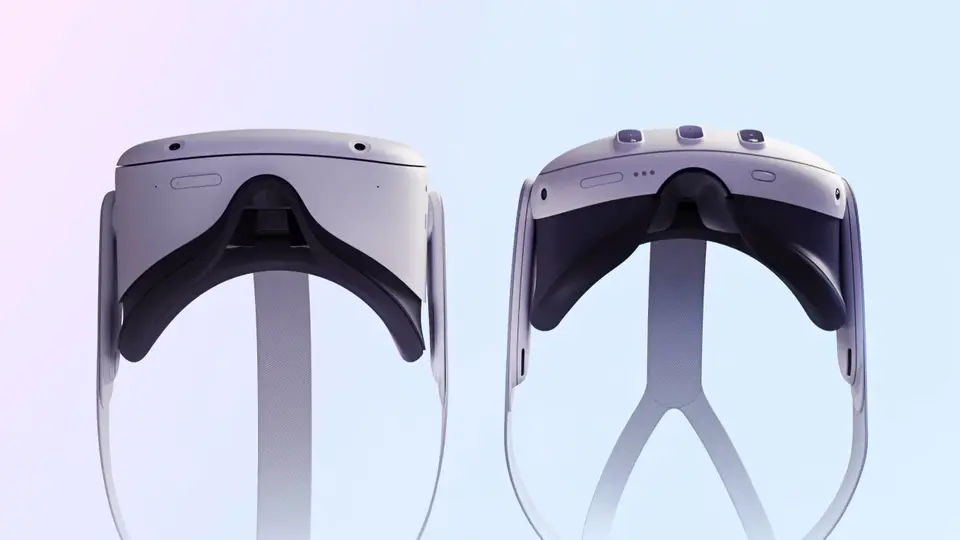
3.2. Design and Aesthetics: The Look and Feel
The Apple Vision Pro sports a minimalist, sleek design that is characteristic of Apple’s product line. It has a modern and premium look, with a focus on simplicity and elegance. The device is available in a single color variant, Space Gray, which adds to its sophisticated appeal.
The Meta Quest 3, in contrast, maintains the black and white color scheme of its predecessor but introduces a more streamlined and compact design. The device looks futuristic, with its trio of pill-shaped cameras/sensors on the front adding a unique touch. The headset appears to be more ergonomic and comfortable for extended use.
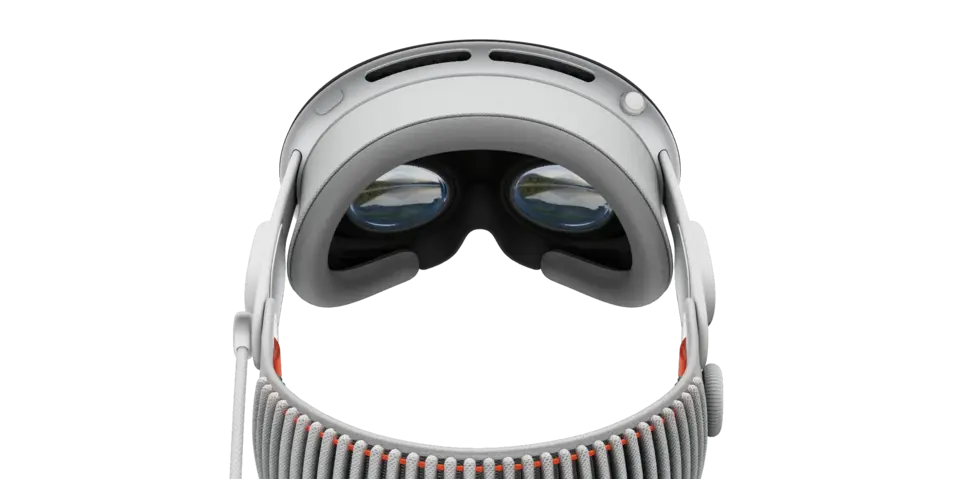
3.3. Controllers and Accessories: Tools of Interaction
Apple Vision Pro works with Bluetooth accessories like Magic Keyboard and Magic Trackpad, which are great for things like complex spreadsheets and productivity tasks. The headset doesn’t require any traditional accessories like a mouse or keyboard, but it can connect to them if needed. Instead, you control the Vision Pro with your eyes, hands, and voice, making it a fully three-dimensional user interface controlled by the most natural and intuitive inputs possible.
The Meta Quest 3, on the other hand, comes with a new set of Touch Plus controllers that are more streamlined and ergonomic than their predecessors. The controllers have been redesigned to feel like a natural extension of the user’s hands, and they also feature TruTouch haptics, which provide tactile feedback to enhance the sense of immersion. The Quest 3 also supports hand tracking out of the box, allowing users to interact with the virtual world using just their hands.
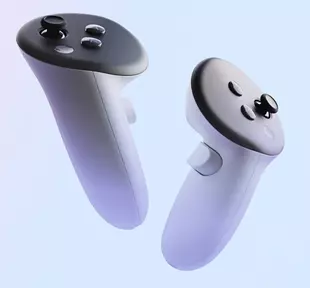
4. The Software Battle: User Interface and Experience
4.1. Operating Systems, Ease of Use, and User Interface: A Software Comparison
Operating System
Apple Vision Pro runs on visionOS, the world’s first spatial operating system that blends digital content with the physical world. On the other hand, Meta Quest 3 is powered by its own proprietary operating system based on Android.
Ease of Use and User Interface
Apple Vision Pro offers an intuitive hand-tracking capability that allows users to interact with simple hand gestures and an impressive eye-tracking technology. Users will have the ability to select virtual items just by looking at them. The UI is brand new, with a spatial 3D interface and a floating app grid home screen. It also includes several brand new subsystems for real-time rendering of immersive 3D worlds.
Meta Quest 3 has multi-window app support, and the Quest 3 is expected to be powered by the Qualcomm Snapdragon XR2 Gen 2 chip and 12GB of RAM, which should be more than enough for smooth multitasking and productivity, let alone content consumption.
4.2. App Stores, App Availability, and Exclusives: The Digital Playground
The Apple Vision Pro and the Meta Quest 3, while both lauded mixed reality headsets, serve distinctly different objectives. The former manifests as a spatial computer, blending digital elements within the physical environment, while the latter emerges as a potent force within the realm of virtual and mixed reality.
Each device presents its unique digital marketplace. For the Vision Pro, Apple has introduced an innovative App Store filled with pioneering applications designed specifically for the visionOS, supplemented by a host of iPad and iPhone applications that are also compatible. Conversely, Meta Quest 3 employs the established Meta Quest Store, allowing users to delve into an expansive repository of over 1,000 applications, games, and immersive experiences.
Regarding app accessibility, the Vision Pro, being a recent entrant, has yet to fully unveil its app portfolio. Nevertheless, Apple has already committed to integrating iPad and iPhone applications within the new device’s input system. In contrast, Meta Quest boasts a robust library exceeding 500 VR-oriented games, apps, and experiences, all compatible with the Quest 3, carrying over from the impressive catalog established by the Quest 2.
Examining the targeted user base of both devices reveals another layer of differentiation. Apple markets the Vision Pro as an advanced productivity tool, hinting at its potential to revolutionize workspace dynamics. The Quest 3, meanwhile, is positioned predominantly as a gaming device, leveraging Meta’s extensive library of over 500 VR games.
On a design front, both devices echo some fundamental similarities, such as wireless connectivity and integrated speakers. Yet, they diverge in certain aspects: Vision Pro’s bespoke modular Head Band stands out, while the Quest 3 showcases a distinctive Y-shaped design.
In conclusion, the choice between the two hinges on user needs and expectations. For VR gaming enthusiasts, the Quest 3 would likely be more appealing. However, if one seeks a versatile device capable of a broad spectrum of apps, games, and experiences, the Vision Pro’s integration with visionOS might represent a more comprehensive solution.
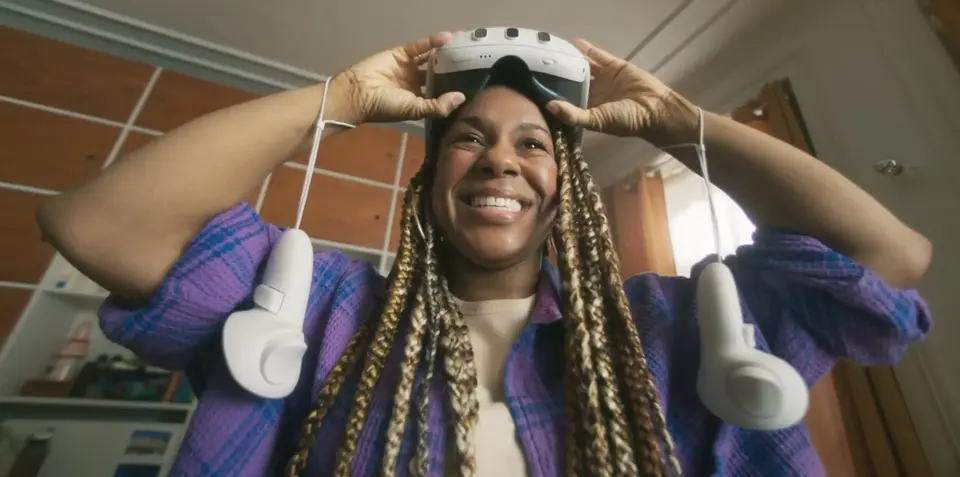
5. Performance Face-off: Tech Specs and Real-World Use
5.1. Processor, Graphics Performance: The Technical Specs
Processor:
- Apple Vision Pro: The Vision Pro relies on Apple’s trailblazing M2 processor, drawn from the latest Mac systems, as the heart that powers the device. In concert with this, it employs the innovative R1 chip to manage data derived from various cameras and sensors. The M2 chip hails from the same lineage as those powering Mac computers, MacBooks, and the iPad Pro, reflecting Apple’s consistency in performance.
- Meta Quest 3: It’s speculated that this device will harness the capabilities of the Snapdragon Qualcomm XR2 chip, a product engineered explicitly for such use cases but finds its roots in smartphone technology. The Quest 3 features an upgraded XR2+ chip, a step up from the XR2 iteration that propelled the Quest 2.
Graphics Performance:
-
Apple Vision Pro: This headset boasts an impressive computational prowess necessary to drive its suite of inbuilt cameras and is predicted to outshine the Meta Quest 3 in terms of graphical performance. Despite the possibility that a high-speed PC equipped with an elite GPU could outpace the Vision Pro in benchmark tests, the Vision Pro is still anticipated to deliver sharper visual experiences than the Meta Quest 3.
-
Meta Quest 3: This headset is projected to deliver a graphics performance twice as potent as its predecessor, the Quest 2, though it might still trail behind the Vision Pro. The XR2+ chip facilitates seamless interaction with currently available games and apps, and for those craving more graphical intensity, a connection can be established with a Windows PC possessing a dedicated GPU, ensuring satisfying responsiveness and higher-quality imagery.
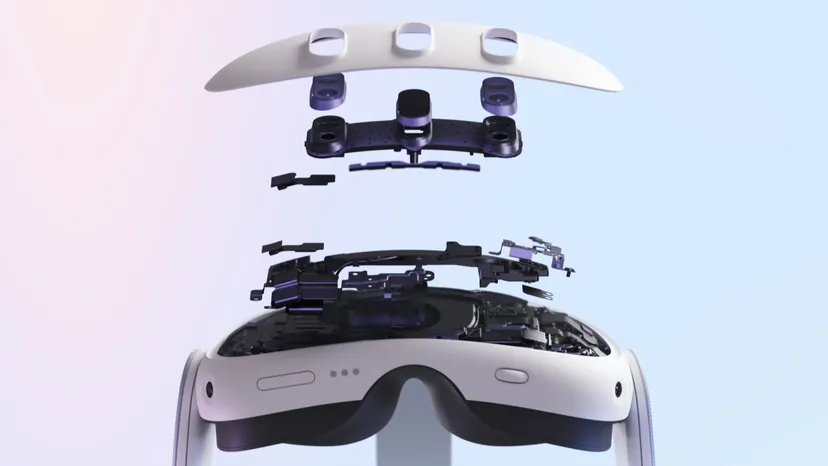
In conclusion, the Apple Vision Pro, equipped with a more formidable processor, is predicted to offer superior graphical performance than the Meta Quest 3. The Vision Pro’s M2 chip is consistent with those found in other Apple powerhouses like Mac computers, MacBooks, and the iPad Pro, whereas the Quest 3 employs a Snapdragon Qualcomm XR2 chip, a derivative of smartphone technology. While the Quest 3 promises to deliver double the graphical prowess of the Quest 2, it’s anticipated to remain a step behind the Vision Pro.
5.2. Smoothness, Latency, and More: Performance in Practice
As the Apple Vision Pro is yet to be released, hands-on reviews and user experiences are not available. However, given Apple’s track record and the advanced technologies used in the device, we can expect a smooth, responsive, and immersive mixed reality experience.
The Meta Quest 3, similarly, is yet to be released. However, with the improved Snapdragon chip and the promise of twice the graphics performance, users can expect a smooth and immersive VR experience with minimal latency.
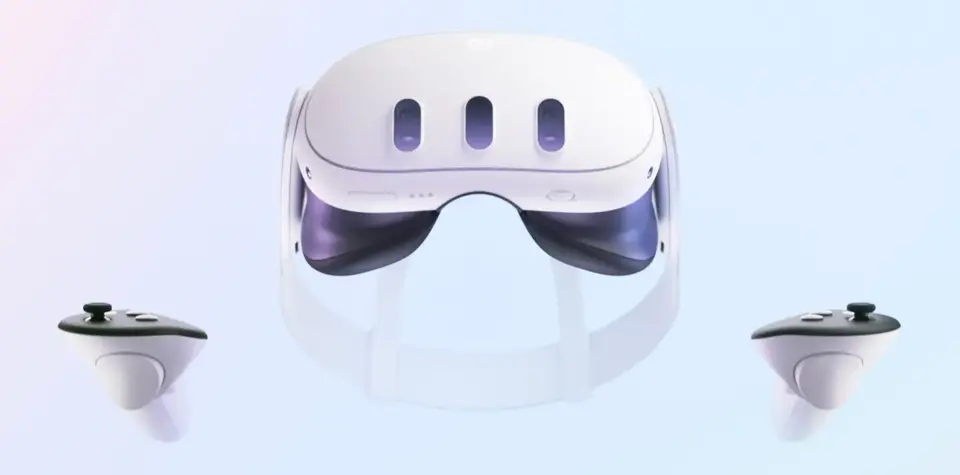
5.3. Battery Life: Powering the Experience
The Apple Vision Pro offers extended battery life, supporting all-day use when plugged in and up to two hours of use with an external, high-performance battery. The Meta Quest 3’s battery life has not been specified, but it is expected to be comparable to that of its predecessor, the Quest 2.
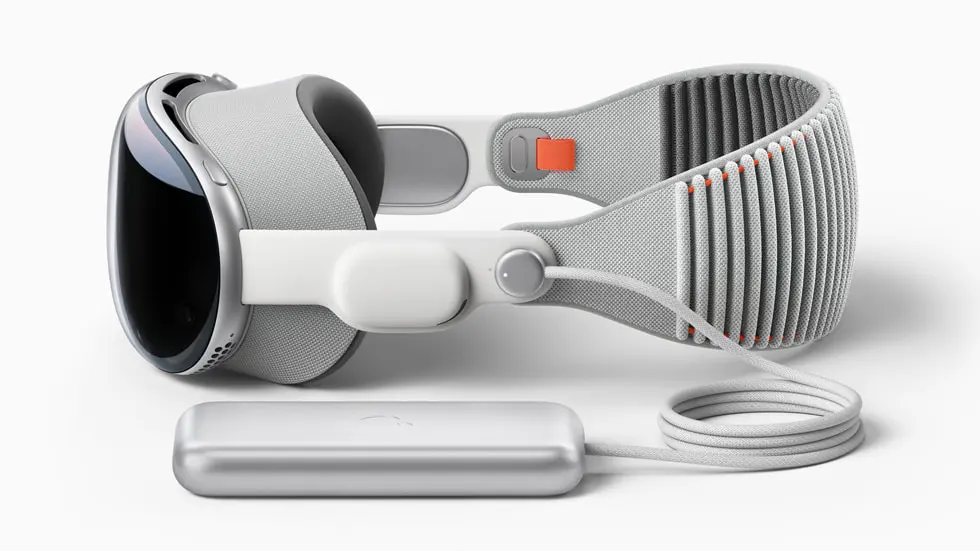
6. Feature Frenzy: Unique and Shared Features
The Apple Vision Pro offers a unique mixed reality experience, allowing users to see, hear, and interact with digital content as if it were part of their physical environment. The device features spatial audio, voice recognition, and an ultra-high-resolution display, providing a truly immersive experience.
The Meta Quest 3, on the other hand, offers a high-quality VR experience with a focus on social interaction and gaming. The device features a new Snapdragon chipset, improved graphics performance, and a refreshed design. One unique feature is the High-fidelity color Passthrough, which allows users to see the real world around them in full color through the headset.
7. Comfort and Wearability: The User Experience
7.1. Wearability and Comfort for Extended Use: The Long Haul
The Apple Vision Pro has been designed with comfort in mind. The headset features a headband that provides cushioning, breathability, and stretch, and a fit dial that allows users to adjust the headset precisely to their head. The light seal gently conforms to the user’s face, delivering a precise fit while blocking out external light, ensuring an immersive experience. The headset is also designed to be balanced and lightweight, reducing pressure on the face and making it comfortable for extended use.
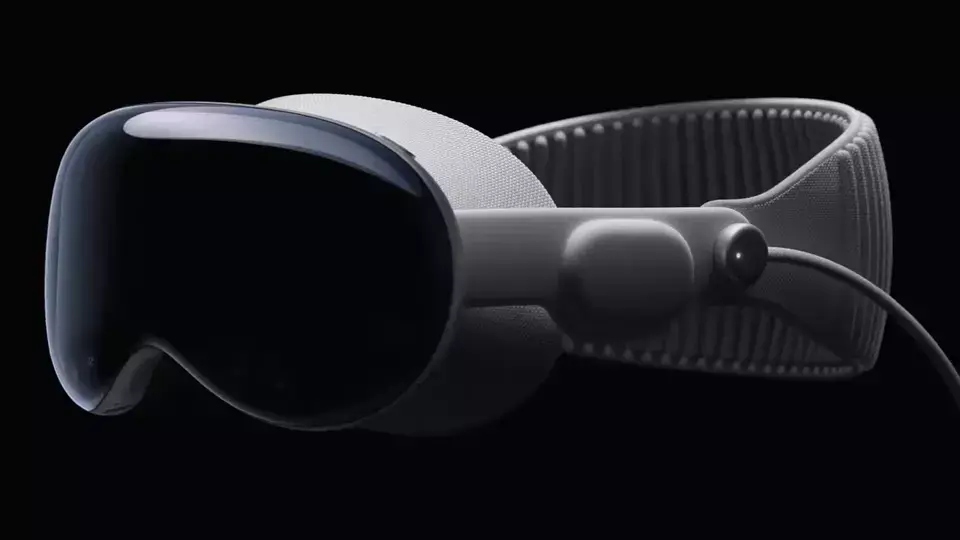
The Meta Quest 3, on the other hand, has been completely redesigned from the inside out. It’s now 40% slimmer than its predecessor, and it features a flexible material for the head strap, making it more comfortable for extended wear. The headset also has a redesigned face shield that blocks out external light and a flexible mesh that surrounds the lenses, allowing for easy adjustment of the inter-pupillary distance.
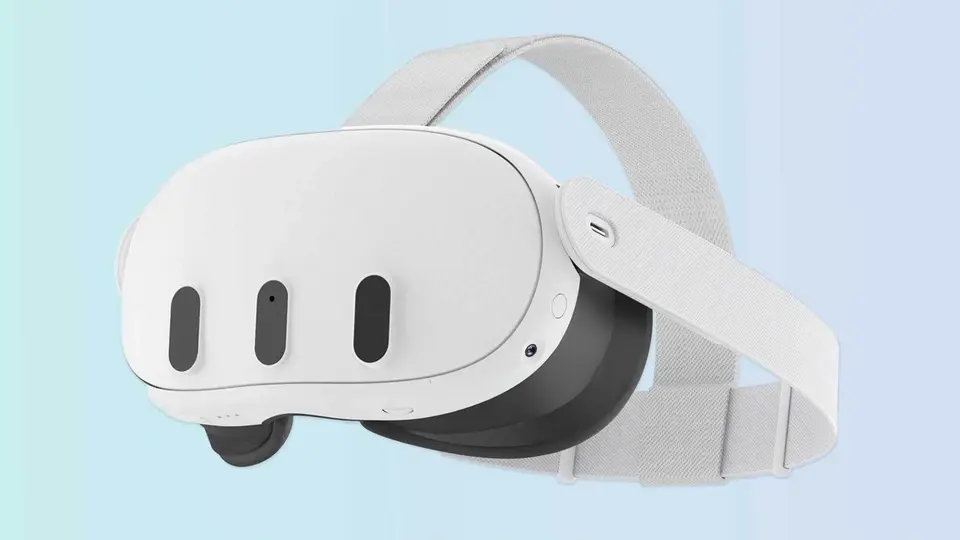
7.2. Adjustable Features and User Accommodation: Personalizing the Experience
Both the Apple Vision Pro and the Meta Quest 3 offer a range of adjustable features to accommodate different users. The Vision Pro features a fit dial that allows users to adjust the headset precisely to their head, while the Quest 3 has a flexible head strap and a potential motorized inter-pupillary distance adjustment feature, allowing users to set the correct distance with the press of a button.
8. Price and Value: The Cost of the Future
8.1. Retail Prices and Deals: The Price Tag
The Apple Vision Pro is set to be available for purchase early next year with a starting price of $3499. Given the advanced technologies and unique features offered by the device, it is positioned as a premium product in the mixed reality market.
The Meta Quest 3, on the other hand, has been officially announced to start at $499 for the base model with 128GB of storage. This is $200 more than its predecessor, the Quest 2, but Meta has justified the price increase with the use of more advanced VR technology and a significant upgrade in the headset’s specs.
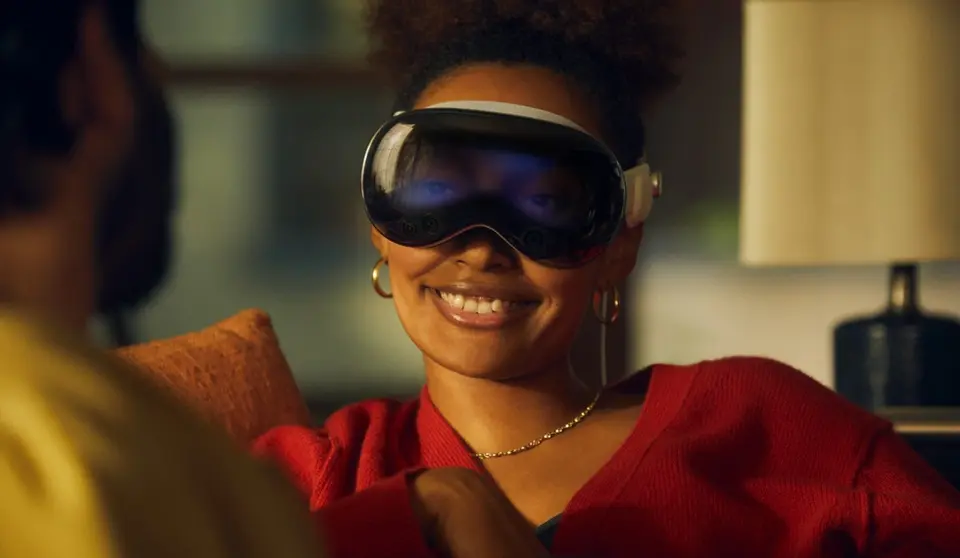
8.2. Value for Money: Worth the Investment?
The Apple Vision Pro, with its high price point, is clearly a premium product. It offers a unique mixed reality experience, with advanced technologies like spatial audio, voice recognition, and an ultra-high-resolution display. For users who are looking for a top-of-the-line mixed reality experience and are willing to pay a premium for it, the Vision Pro could offer good value for money.
The Meta Quest 3, while less expensive than the Vision Pro, still offers a high-quality VR experience. With its improved performance, comfort, and focus on social interaction and gaming, it could offer good value for money for users who are looking for a high-quality VR experience at a more affordable price point.

9. Community and Support: The Ecosystem
9.1. Support from the Companies: Warranty, Customer Service, and More
Both Apple and Meta offer robust customer support for their products. Apple is known for its high-quality customer service, with support available through a variety of channels, including online, over the phone, and in Apple Stores.
Meta also offers a range of support options for the Quest 3, including online resources, a dedicated support team, and a community forum where users can ask questions and share tips.
9.2. The User Community: Size, Activity, and Resources
Both the Apple Vision Pro and the Meta Quest 3 have active user communities. Apple’s community is large and diverse, with users sharing tips, tricks, and experiences on a variety of platforms, including Apple’s own forums, Reddit, and social media. The Meta Quest community is also active and engaged, with users sharing experiences, tips, and tricks on platforms like Reddit, Meta’s own forums, and various VR-focused websites and forums.
10. The Final Verdict: Conclusion
10.1. Key Differences and Similarities: The Recap
The Apple Vision Pro and Meta Quest 3 are both impressive devices that offer high-quality, immersive VR and MR experiences. They both feature high-resolution displays, advanced sensors for accurate tracking, and hand tracking capabilities. However, there are key differences between the two. The Vision Pro is more expensive and offers a more premium experience with its sleek design and integration with other Apple devices and services. The Quest 3, on the other hand, is more affordable and offers a more traditional VR experience with its use of controllers and a larger library of VR games and apps.
10.2. Personal Recommendation: Which One’s for You?
If you’re an Apple user and are willing to pay a premium for a sleek, integrated experience, the Apple Vision Pro is a great choice. It offers a unique, immersive experience and integrates seamlessly with other Apple devices and services. However, if you’re looking for a more affordable VR experience with a large library of games and apps, the Meta Quest 3 is a fantastic option. It offers a high-quality, immersive experience and is more comfortable for extended use. Ultimately, the choice between the two will depend on your personal preferences and budget.


